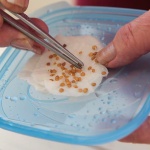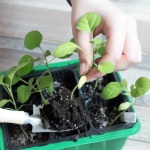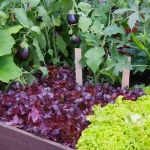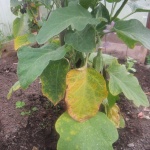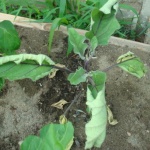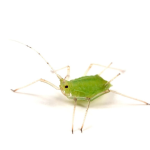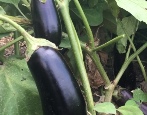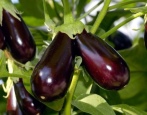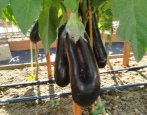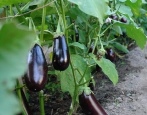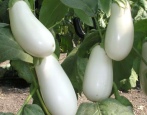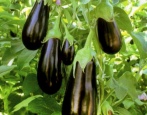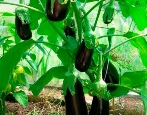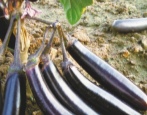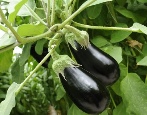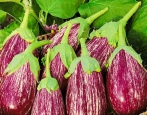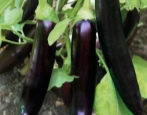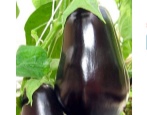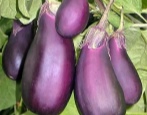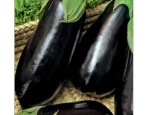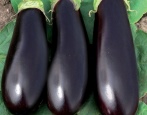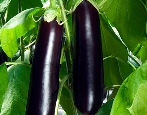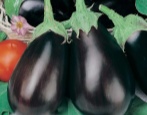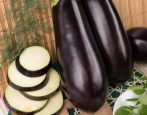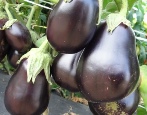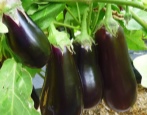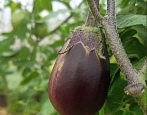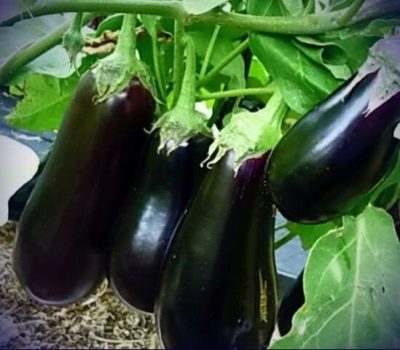
- Authors: Gavrish S.F., Kapustina R.N., Gladkov D.S., Volkov A.A., Semenova A.N., Artemyeva G.M., Filimonova Yu.A., Redichkina T.A.
- Year of approval: 2011
- Bush height, cm: 100-120
- Fruit shape: oval
- Fruit weight, g: 250-300
- Yield: high yielding
- Fruit color: dark purple
- Ripening terms: mid-season
- Pulp (consistency): gentle
- Color of the pulp: whitish
Eggplant is one of the most popular vegetables that is present in the diet of almost every person, so its cultivation in vegetable gardens and greenhouses is in particular demand. It is recommended for novice gardeners to choose hybrid varieties for planting, which are characterized by good stress resistance and unpretentious care. One of these is the Caviar eggplant, bred by domestic scientists.
Breeding history
Eggplant Caviar is a hybrid of the first generation, bred by a group of Russian breeders of the Gavrish agricultural company in 2011. Authorship belongs to Filimonova Yu.A., Gladkov D.S., Gavrish S.F., Kapustina R.N. and Volkov A.A.
A vegetable crop was included in the State Register of approved for use 10 years ago. The vegetable is cultivated in greenhouses of various types, under film shelters, and also much less often on garden ridges. Eggplant can be grown in any climatic zone of Russia.
Description of the variety
This species grows as a medium-sized bush with semi-spreading branches and sturdy stems without anthocyanin coloration. In a favorable environment, the plant stretches up to 100-120 cm in height. The bush has weak pubescence of the stems, moderate thickening with emerald green leaves and a developed root system. During the flowering period, large light purple flowers are formed on the bushes. On one eggplant bush, 5-6 leveled specimens ripen.
Characteristics of the appearance of plants and fruits
Caviar represents a class of large-fruited varieties. On the bushes, vegetables of the same shape and size, weighing from 250 to 300 grams, ripen. The length of the fruit is up to 12-20 cm, and the diameter is 6-7 cm. The shape of the fruit is oval or in the form of an elongated pear. Ripe eggplants are evenly covered with a dark purple color.
The surface of the vegetable is smooth, glossy, without depressions and other irregularities. The peel of eggplants is thin, but strong, which ensures good preservation during long transportation, as well as long shelf life - up to 4-5 weeks.
Purpose and taste
Eggplant Caviar is famous for its excellent taste. The whitish-creamy pulp is endowed with a fleshy, tender and medium-dense structure without fibrillation and voids. The taste contains notes of mushroom, pleasant oiliness, and also a classic aroma. The bitterness and pungency of the hybrid is absent at the genetic level. In addition, there are very few seeds in eggplant pulp.
The harvested crop has a wide range of uses in cooking - eggplants are fried, stewed, baked, pickled, frozen, and also processed into caviar.
Ripening terms
The Caviar vegetable belongs to the mid-season category. Less than 4 months pass from mass germination to maturation of the first fleshy specimens on the bushes - 100-110 days. The fruiting period of the variety is extended. You can remove the fruits from July to September. It is recommended to carefully cut the eggplants every 4-5 days.
Yield
The yield indicators for this hybrid are high, the main thing is to follow the basic agricultural techniques. On average, about 3 kg of fleshy vegetables can be harvested from 1 m2. According to experienced vegetable growers, the yield of the Ikornyi hybrid ranges from 6-7.5 kg / m2.
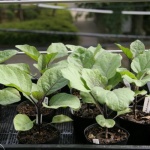
To get a tasty and bountiful eggplant crop, you must first grow strong and healthy seedlings.This culture is considered very capricious, therefore, you need to take care of seedlings when growing at home as correctly and carefully as possible.
Landing scheme
When planting eggplants, it is necessary to observe the density of the placement of the bushes, as well as the distance between the plantings, which will ensure the correct access of light, heat and air to each bush. 4-5 bushes are planted per 1 m2. Planting is recommended to be carried out according to the classic 40x60 cm scheme.
Growing and caring
Eggplant is cultivated exclusively through seedlings, which can be purchased or grown independently. For planting, strong bushes are selected at the age of 60-65 days, 18-22 cm high, with 5-8 true leaves and a formed rhizome. Planting takes place in the last week of May.
The vegetable needs regular watering with warm water under the root, fertilizing 3-4 times per season (the plant responds well to mineral complexes), loosening and weeding the soil every 2 weeks, forming a bush, removing lateral shoots and extra leaves before the first branching, and also in compulsory garter and virus prevention.
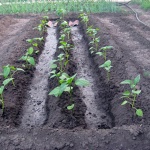
Planting eggplant is one of the most important stages in growing. When choosing a place for eggplants in your area, it is important to remember that this culture should be in warm soil, constantly illuminated by the sun. The plant is also very fond of spacious, open spaces, since its roots can grow over sufficient areas.


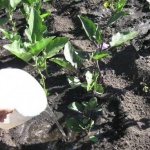
Soil requirements
Caviar prefers light, airy, moist, fertile and non-acidic soils. The plant is most comfortable to grow in loam, sandy loam and chernozem substrates. Clay soils and salt licks are not suitable for growing Ikorny eggplants.
Required climatic conditions
Despite the fact that the vegetable crop is tolerant to unfavorable weather factors, it prefers to grow in a sunny place, where there is enough heat, diffused light, and air. It is important that there is protection from drafts.
Disease and pest resistance
The variety has a low susceptibility to a number of infections and diseases. Eggplant can be sick with late blight and various rot only in conditions of increased dampness. To prevent pest attacks, it is enough to carry out preventive treatments in a timely manner.
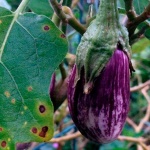
Eggplant is one of the most demanding crops. For its successful cultivation, it is necessary to create optimal conditions, as well as to carry out prevention and fight against diseases and pests. Eggplant often infects both fungal and viral diseases. If treatment is not started on time, you can completely lose the crop.
